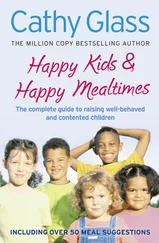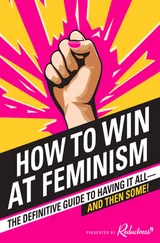There was Will standing by his completely trashed car at the very entrance of his school, looking sheepish as basically the entire school drove by him as students and staff arrived for the day. What a lesson for Will. I recognized that immediately—and was so thankful that he and the other driver had emerged unscathed from this battle of wills as to who had the right-of-way.
What was he thinking? I asked myself, almost reflexively.
Then: Oh, no, here we go again.
This time, however, I quickly calmed myself. I knew a lot more now. I knew Will’s brain, like Andrew’s, like every other teenager’s, was a work in progress. He clearly was no longer a child, and yet his brain was still developing, changing, even growing. I hadn’t recognized that until Andrew made me sit up and take stock of what I knew about the pediatric brain, that it’s not so much what is happening inside the head of an adolescent as what is not.
The teenage brain is a wondrous organ, capable of titanic stimulation and stunning feats of learning, as you will learn in this book. Granville Stanley Hall, the founder of the child study movement, wrote in 1904 about the exuberance of adolescence:
These years are the best decade of life. No age is so responsive to all the best and wisest adult endeavor. In no psychic soil, too, does seed, bad as well as good, strike such deep root, grow so rankly or bear fruit so quickly or so surely.
Hall said optimistically of adolescence that it was “ the birthday of the imagination,” but he also knew this age of exhilaration has dangers, including impulsivity, risk-taking, mood swings, lack of insight, and poor judgment. What he couldn’t possibly have anticipated back then is the breathtaking range of dangers teens would be exposed to today through social media and the Internet. How many times have I heard from friends, colleagues, even strangers who have reached out to me after hearing me speak, about the crazy things their teenage kids or their friends just did? The daughter who “stole” her father’s motorcycle and crashed it into a curb. The kids who went “planking”—lying facedown, like a board, on any and every surface (including balcony railings), and then taking photos of one another doing it. Or worse: “vodka eyeballing,” pouring liquor directly into the eye to get an immediate high, or, scared about passing a drug test for a weekend job, ingesting watered-down bleach, thinking it would “clean” their urine of the pot they had smoked the night before.
Children’s brains continue to be molded by their environment, physiologically, well past their midtwenties. So in addition to being a time of great promise, adolescence is also a time of unique hazards. Every day, as I will show you, scientists are uncovering ways in which the adolescent brain works and responds to the world differently from the brain of either a child or an adult. And the way that the adolescent brain responds to the world has a lot to do with the impulsive, irrational, and wrongheaded decisions teens seem to make so frequently.
Part of the problem in truly understanding our teenagers lies with us, the adults. Too often we send them mixed messages. We assume that when our kid begins to physically look like an adult—she develops breasts; he has facial hair—then our teenager should act like, and be treated as, an adult with all the adult responsibilities we assign to our own peers. Teenagers can join the military and go to war, marry without the consent of their parents, and in some places hold political office. In recent years, at least seven teens have been elected mayors of small towns in New York, Pennsylvania, Iowa, Michigan, and Oregon. Certainly the law often treats teens as adults, especially when those teens are accused of violent crimes and then tried in adult criminal courts. But in myriad ways we also treat our teens like children, or at least like less than fully competent adults.
How do we make sense of our own conflicting messages? Can we make sense?
For the past few years I’ve given talks all over the country—to parents, teens, doctors, researchers, and psychotherapists—explaining the risks and rewards that pertain to the new science of the adolescent brain. This book was prompted by the tremendous, even overwhelming, number of responses I have received from parents and educators (and sometimes even teens) who heard me speak. All of them wanted to share their own stories, ask questions, and try to understand how to help their kids—and, in the process, themselves—navigate this thrilling but perplexing stage of life.
The truth of the matter is, I learned from my own sons that adolescents are not, in fact, an alien species, but just a misunderstood one. Yes, they are different, but there are important physiological and neurological reasons for those differences. In this book I will explain how the teen brain offers major advantages on the one hand but unperceived and often unacknowledged vulnerabilities on the other. I am hoping you will use this as a handbook, a kind of user’s manual or survival guide to the care and feeding of the teenage brain. Ultimately, I want to do more than help adults better understand their teenagers. I want to offer practical advice so that parents can help their teenagers, too. Adolescents aren’t the only ones who must navigate this exciting but treacherous period of life. Parents, guardians, and educators must, too. I have—twice. It is humbling, exhilarating, confusing, all at the same time. As parents, we brace ourselves for what will be quite a roller-coaster ride, but in the vast majority of cases the ride slows down, evens out, and gives one a lot of stories to tell afterward!
Nearly a decade ago, when it became clear to me that being a parent of teenagers was nothing like taking care of overgrown children, I said, Okay, let’s work on it together. I stayed in my sons’ faces. I remember one time, when Andrew was still a sophomore in high school, the inevitable point arrived when exams were just around the corner and he was still paying more attention to sports and parties than books and homework. Because I’m a scientist, I know learning is cumulative—everything new is based on something you just learned, so you have to hang in there, you have to stay on top of it. So I got a pad of paper and I went through each chapter of Andrew’s textbooks, and on one side of the paper I picked out a problem for him to solve and on the other side, folded, was the answer. All he needed was a model, a template, a structure. It was a turning point for him and me. He realized he actually had to do the work—sit down and do it—in order to learn. He also realized working on his bed, with everything spread out around him, wasn’t helping. He needed more structure, so he sat himself at his desk, with a pencil sharpener and a piece of paper in front of him, and he learned how to impose order on himself. He needed the external cues. I could plan and he couldn’t at that point. Having a structured environment helped him learn, and eventually he got really good at it, sitting in his chair at his desk for hours. I know because I’d check in on him. I also knew this was a good example of place-dependent learning. Scientists have shown that the best way to remember what you’ve learned is to return to the place where you learned it. For Andrew, that was his desk in his bedroom. As I will explain later, teenagers are “jacked up” on learning—their brains are primed for knowledge—so where and how they learn is important, and setting up a place where homework is done is something any parent can help teens do. And because homework is one of the main things kids do at home, you can stay involved with your teenagers even if you don’t happen to have an MD or PhD in the subject or subjects they’ve neglected for months. You can offer to proofread assignments, spell-check their essays, or simply make sure they are sitting in a comfortable desk chair. While you might not have the right hair guy to get red streaks, the point is that you can at least spring for a home hair dye when they want to transform themselves on the outside. Let them experiment with these more harmless things rather than have them rebel and get into much more serious trouble. Try not to focus on winning the battles when you should be winning the war —the endgame is to help get them through the necessary experimentation that they instinctively need without any longterm adverse effects. The teen years are a great time to test where a kid’s strengths are, and to even out weaknesses that need attention.
Читать дальше












